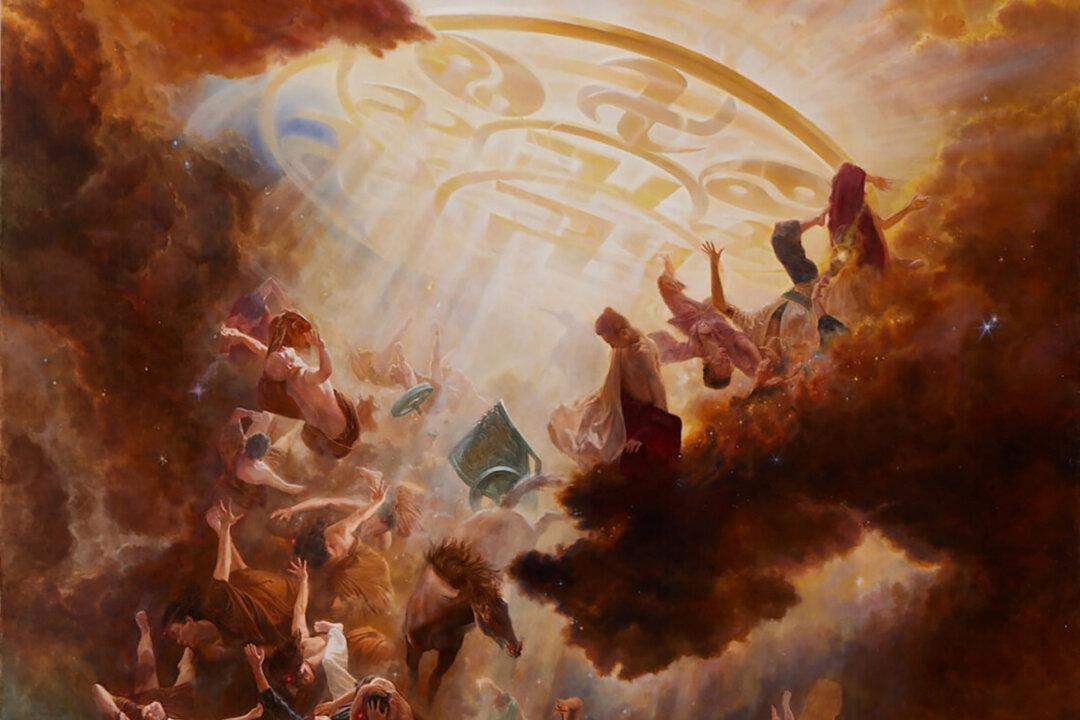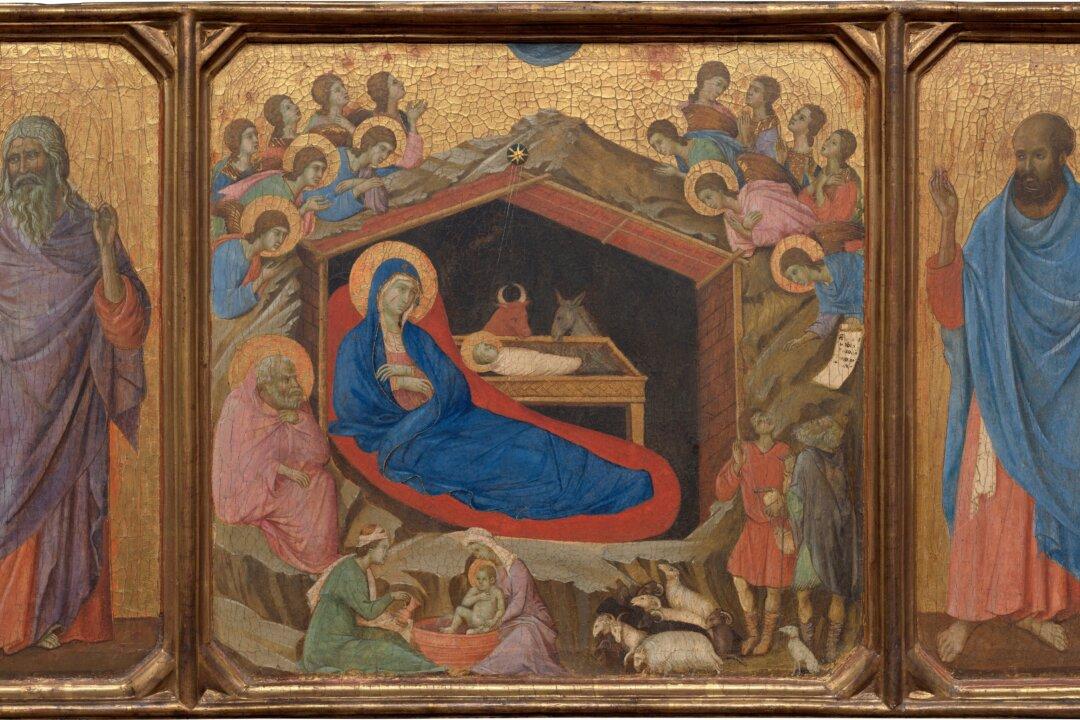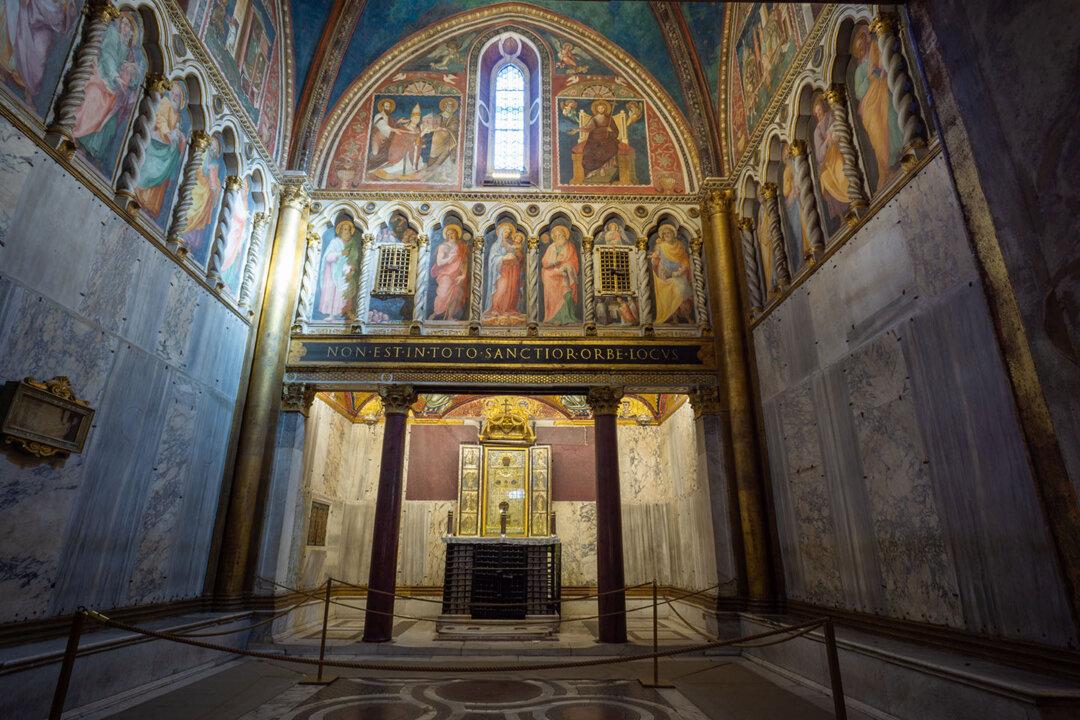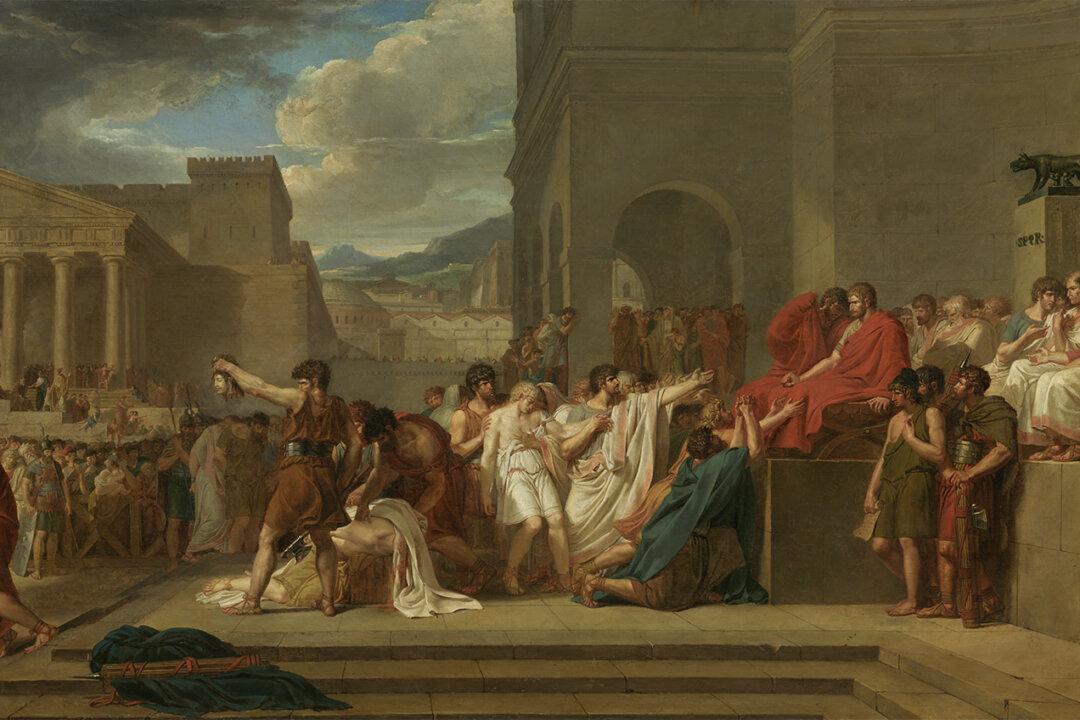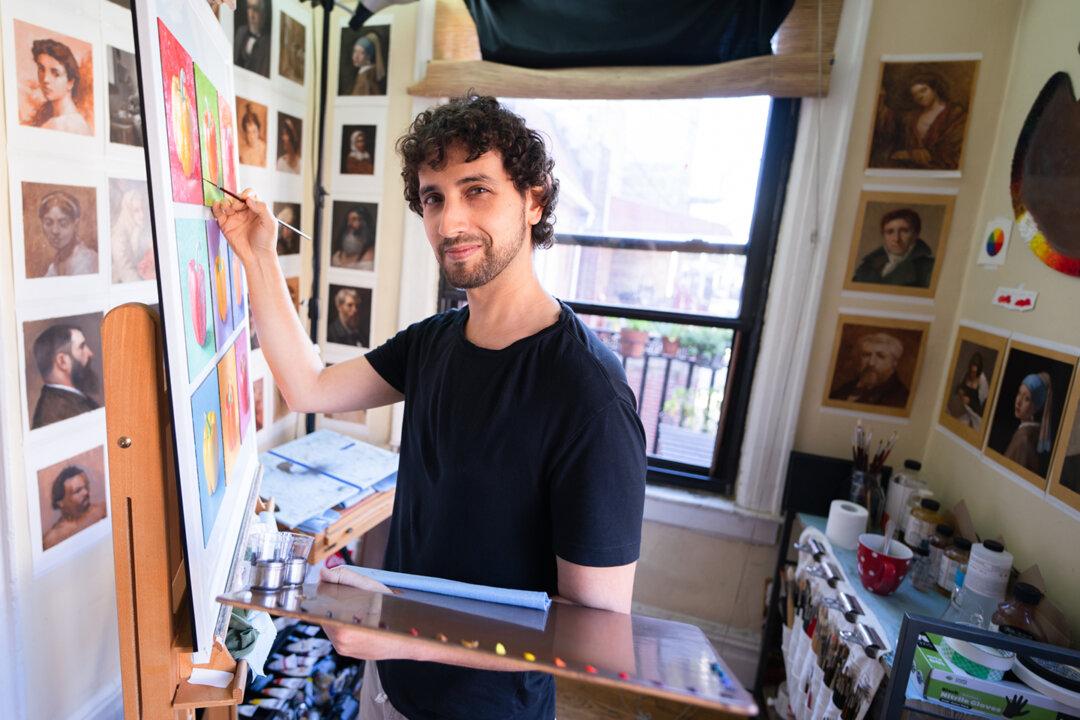Of the many masterful works entered in the Sixth NTD International Figure Painting Competition, the silver award-winning “The Infinite Grace of Buddha” stood out as particularly impressive. Each panel of the triptych, an artwork in three sections, was painted by a different artist: Hung-Yu Chen, Yuan Li, and Shao-Han Tsai.
The monumental right panel of the triptych, painted by Taiwanese artist Mr. Tsai, depicts the ageless theme of eternal punishment. At the top of the panel, a semicircle of Buddhas recede into saturated clouds while a golden wheel presses down, emanating rays of light that penetrate the darkness. Below, an embroiled whirlwind of tortuous figures are plunged into the burning abyss that opens in boundless oceans.

